JETAA Singapore YOLO Experience Series-2 Karyn
JETAA Singapore recently asked their members to share their craziest, most epic, YOLO stories. In this three-part series, you will read about these adventures from members of JETAA Singapore as they traveled around Japan. Next is Karyn’s experience as she talks about visiting a variety of festivals on a week-long trip to Tohoku:
What was your YOLO trip like? What inspired it?
Visiting all 47 prefectures was always on my ‘To-do’ list when I started living in Japan. My BOE gave all of the ALTs a very generous 5-day summer leave allowance during the summer holidays, so every summer, I would plan a massive trip that covers as many prefectures as I could fit in a region I hadn’t yet visited.
One year, I read an article about the Tohoku Rokkon Festival – an event where 6 of the region’s summer festivals are celebrated. I was intrigued, since I had always been under the impression that there were only the 3 big ones in Tohoku – the Nebuta Matsuri in Aomori, the Kanto Matsuri in Akita and the Tanabata Matsuri in Sendai. Well, now that I knew there were 6 of them and at least 2 of them were in prefectures I hadn’t yet visited, I had to plan a major trip to see all of them at least once while I was in Japan.
So the thing about these festivals is that they are held at around the same time every year – late July to early August – and as the festival dates overlap slightly, it is definitely possible to do a big runabout to see all of them IF you plan well in advance, especially for the Big 3. I started planning in March, and even then, I had already fallen behind in booking my hotel rooms in Aomori and Akita, so I had to resort to some creative manipulation to ensure that I had a roof over my head every night while not falling behind on my schedule.
You see, that’s the next part of my epic tale. Besides putting myself on a strict schedule to make every festival in the region, I also put myself on a strict travel and accommodation budget. Instead of shinkansen rides or flights, I would be using the ‘poor ALT’s best friends’ – the Seishun 18 ticket and the Hokkaido-East Japan Pass. Both passes (which are available to residents of Japan unlike JR passes) allow unlimited JR rides for 5/7 days, but users are limited to only local, express and some limited express trains. Since local trains can be very infrequent, I was committing myself to hours and hours on the rail. (Note: I am a minor train otaku so it wasn’t a real problem for me, but it’s definitely not something that the average traveller would want to do. Plus I had a portable Wi-Fi router with unlimited usage which was awesome for the long train rides.)
How did you plan for the trip?
As I noted before, I started planning the trip in March for the same summer. I looked up all the festival websites to get the exact dates of each festival and planned an itinerary that would bring me to each prefecture on the event dates. With the dates in hand, I looked for cheap accommodation within each city where the festival was being held. It was relatively easy to find hotels for the smaller festivals but near impossible for the 2 big ones in Akita and Aomori. So, I looked for affordable accommodation in nearby cities that was preferably one train ride away. The best option for Akita was in a small city about 1.5 hours away and meant that I would arrive after the festival at about 11pm at night, but hey, it’s Japan. It would be fine.

To book my accommodation, I used jalan.com. It was by-far my favourite site for booking hotels and hostels my entire time in Japan and I rarely used any other sites. They would almost always have the cheapest rates and the most options, and I could accumulate points to be used for my next trip.
P.S. The Japanese version of the site was superior to the English version.
With the accommodation booked, I planned my travelling timetable with the help of Hyperdia. Most people would have used it at some point to plan their schedules on their trips to Japan. I love it because it allows you to look up JR trains only as well as restrict your choices to non-shinkansen trains. I wrote them all down in my travelling diary, with one ‘time-efficient’ choice and at least one ‘in-case-I-miss-a-train’ choice. With everything safely written down in case of bad Wi-Fi, I was ready for my epic trip.
P.S. Again, the Japanese version of the site was more accurate than the English version.
So your entire trip was based in Tohoku?
Actually, I’ve missed out an important part of my epic summer trip. Before I planned this epic Tohoku trip, I had actually decided that 2015 was going to be the year I was going to climb Mt Fuji and had already gotten 2 climbing buddies, both of whom flaked out on me. So, for the two days before my trip, I travelled to Tokyo from Kobe, took a bus to Mt Fuji, climbed it, stayed one night on the mountain, saw the sunrise at the summit, came back down, took a bus back to Tokyo and arranged for a kind fellow SG JET who lived in Tokyo to hold my climbing things for me before I headed up North to Sendai. Before I had even started on my trip, I was already exhausted. But onwards!
Wow, so how did your trip turn out?
Day 1 [Sendai-Fukushima]
The trip started out in Fukushima with the Fukushima Waraji Festival. Basically, it was a festival where groups of people ran down the street carrying massive traditional straw sandals. It was quite hilarious to watch, and was a relatively tame start to the trip.
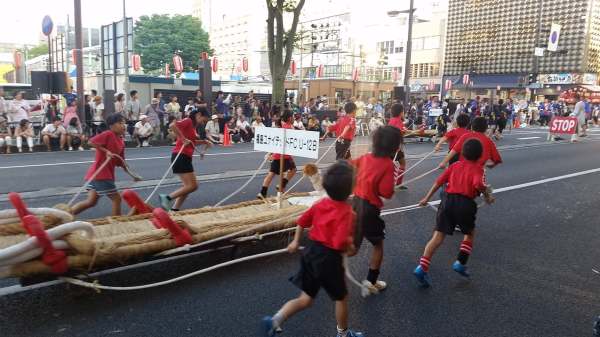
Day 2 – [Fukushima-Morioka; Iwate]
Next day, I headed up north again towards Morioka, home of the wanko soba, in Iwate. (Sidenote: The Zipangu Hiraizumi is a really cool train to ride if you can get on it.) The Morioka Sansa Odori is listed as the biggest taiko drum festival in the world and consists of parades of thousands of drummers from different school and community groups. At the end of it, everyone was invited to dance in the middle of the road. I brought my yukata with me just to be able to participate in the fun.

Day 3- [Morioka-Hachinohe; Aomori]
I did a stopover in Hachinohe to watch the Hachinohe Sansha Taisai, which isn’t one of the 6 but was very spectacular nonetheless. The floats here have mechanism to expand upwards and sideways like a giant pop-up book.
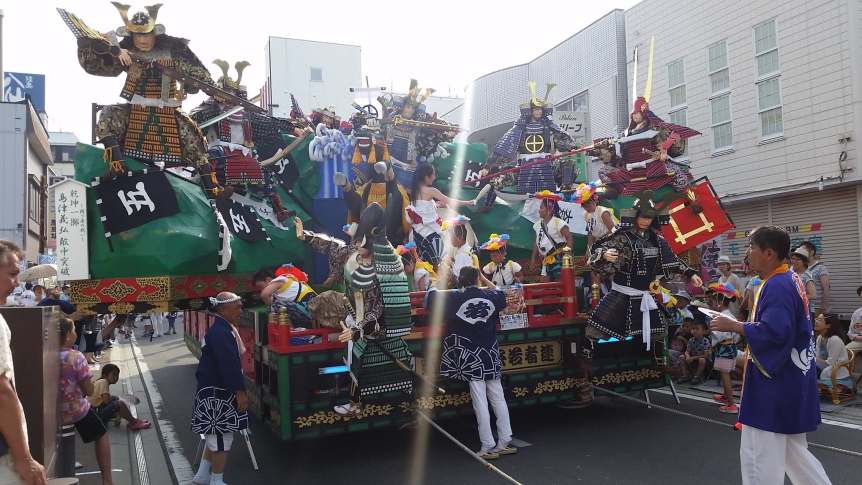
Day 4 – [Hachinohe-Aomori]
Finally, the massive Nebuta Matsuri! There is really nothing like seeing it for yourself. Forget pictures, forget Youtube videos. The only way to experience it is to be there and watch as the massive man-powered floats transverse down the street, often at high speed. It’s quite a sight to see how dozens and dozens of people manage to manoeuvre the floats without any accidents.
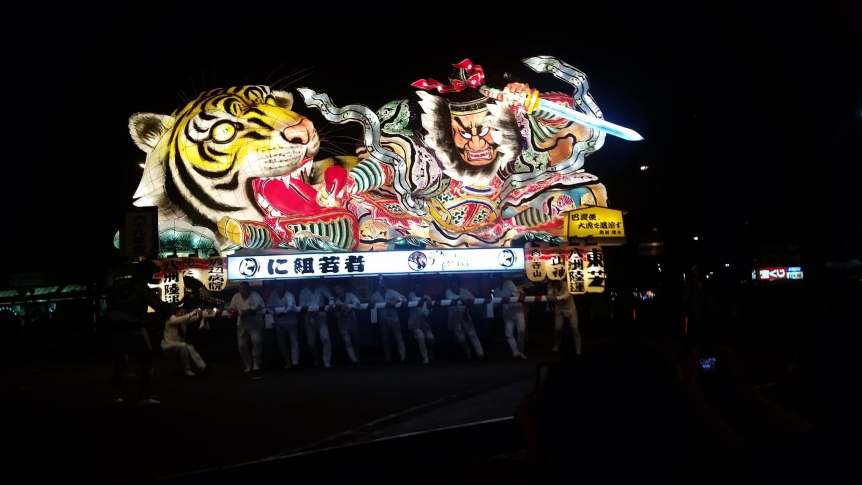
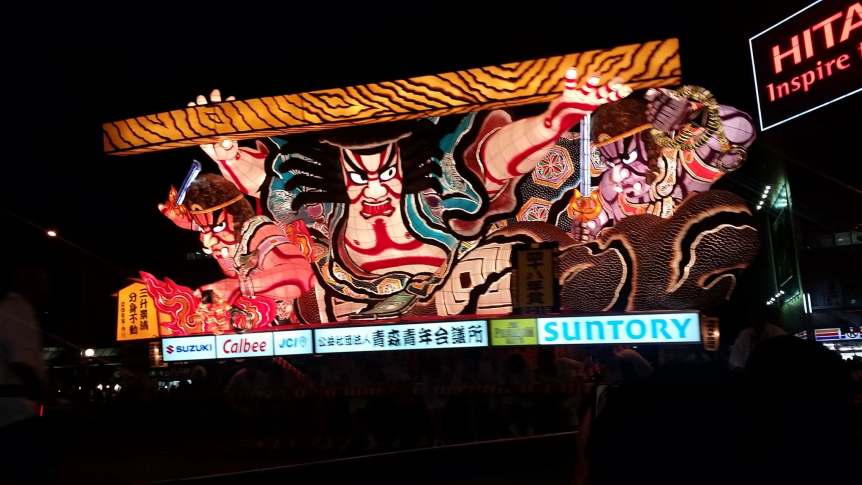
Day 5- [Aomori-Akita]
Dokkoisho, dokkoisho! Unlike Nebuta, the Kanto Matsuri is a test of skill of each individual performer – one man/boy against a heavy stick of lanterns and the wind. The lanterns lit up the night sky and was a glorious sight.
Day 6- [Akita-Yamagata]
Almost done! The Hanagasa Matsuri is a dance parade where performers danced with big straw hats decorated with flowers. The funniest group I saw was the group of young men in army fatigue (probably JSDF recruits?) holding paper hats and dancing with them while having a senior officer shouting at them. I imagined him shouting something like “my grandmother can dance better than you!”

Day 7- [Yamagata-Sendai]
Last day! Compared to the other festivals, the Tanabata Matsuri was just an exhibition of giant decorations hung everywhere in the city. People were all out in full force, taking pictures of whichever one they liked best. Even Starbucks had their own!
Any post-trip thoughts?
It was honestly a crazy epic trip, but I enjoyed it tremendously. One thing I honestly felt about all these festivals were that they all have a huge community and history behind each of them. In these festivals, the schools, community groups, ward groups, even corporate groups got involved. You can feel how proud they are to be a part of this annual cultural event, and how it was so much a part of them. I got a little wistful at that thought.
Total damage?
3 days paid leave plus 3 days of summer leave from my 14/15 allocation and 3 days from my 15/16 allocation
~90,000 yen not including my Fuji climb.
(~30,000 yen in total for my 2 train passes, ~30,000 for accommodation, ~30,000 for food and omiyage)
Advice for those planning this trip?
Start early. Consider splitting it into 2 trips unless you’re crazy like me. If you are lucky to find someone who’s willing to do this trip with you, it’ll be probably be a lot more fun. Go to a Daiso and buy a cushion, a ground sheet, a sweat towel and a bag to hold all of that. Drink lots of water and sunscreen/a hat is an absolute MUST for when you find a spot hours before the festival start.


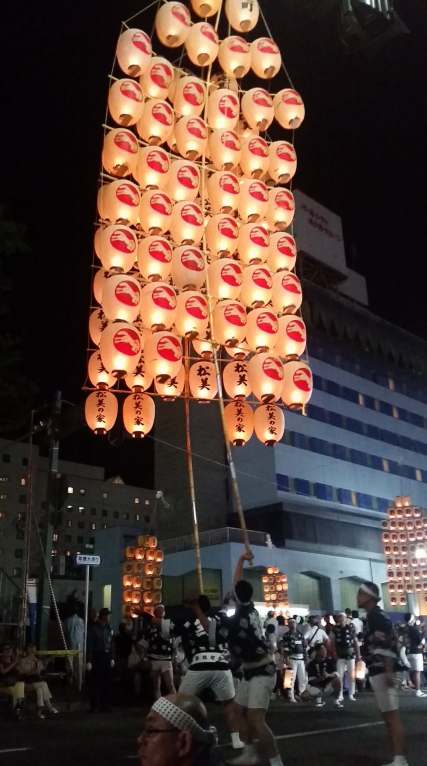
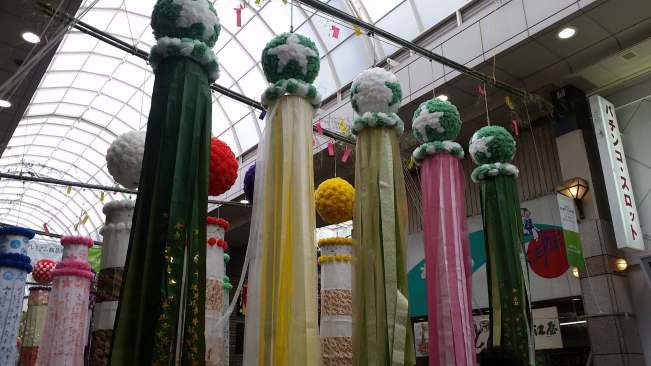


Comments are closed.